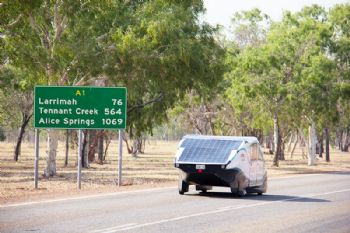
With the support of Formula One (F1) engineering experts and Bridgestone (the world’s largest tyre company), a team of undergraduate students has designed and built Helia — a four-seater solar-powered electric car that can travel over 400 miles at a speed of 50mph on the same power that it takes to boil a kettle.
The Cambridge University Eco Racing team (CUER —
www.cuer.co.uk) recently returned from its first international race in Australia — a 1,864-mile drive from Darwin to Adelaide as part of the Bridgestone World Solar Challenge.
The innovative vehicle pushes the boundaries of automotive battery technology, efficient tyres and aerodynamics, weighing only 550kg (1,200lb) due to its ultra-lightweight carbon-fibre chassis and body panels.
The mould tooling for the chassis was supplied by Portsmouth- based Formaplex, which has worked for F1 teams and automotive companies producing super-cars.
The use of composites allows Helia to travel further and faster than would be possible with other materials.
The battery pack — produced in collaboration with Silverstone-based Danecca — has a much higher energy density than most production vehicles, which gives Helia more than double the range of a Tesla Model 3, while Bridgestone worked with the team to develop low-rolling-resistance tyres.
Unfortunately, some early electrical issues prevented the team from progressing beyond the first stage of the gruelling Australian race, but it was placed third out of 13 by the judges in the practicality category, where it was marked against criteria including design, versatility and desirability.
CUER is now looking ahead to other potential solar races in Europe and beyond, while considering some potential modifications to the vehicle.